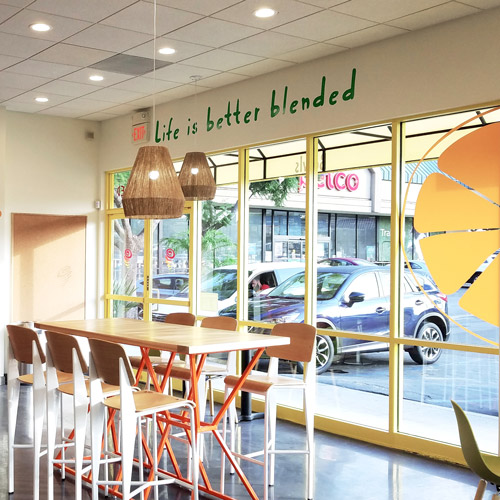
Andrew McCaughan, vice president of development at Shake Shack, believes in the power of restaurants to bring people together. “Our program is to create a great community gathering place,” he says. “When customers walk in, we want them to have that same feeling people get at the Madison Square Park Shack.”
He is referring to the original, wildly popular Shake Shack in the Flatiron District of Manhattan that opened in 2004. What started as a hot dog stand—installed to draw more people to the park itself by Shake Shack founder Danny Meyer, who ran a restaurant across the street from the park—grew into a local hot spot. The food was the main draw, but so, too, were the outdoor seats and an overall casual dining experience. By design, it felt like a modern-day version of the old-fashioned roadside burger stand.
The new-concept quick-service restaurant chain has taken hot dogs, burgers, fries, and, of course, shakes, to a whole new place. The brand is developing an almost cult-like following as the company grows quickly following its 2015 IPO that brought in $1.8 billion. As of October 2017, there were 150 Shacks, with more than 90 locations across the US and more than 50 in countries such as Saudi Arabia, Japan, Russia, Turkey, and the UK.

McCaughan has been with the company almost from the beginning: he joined in 2010, when it had only three locations, and he came with an enviable hospitality pedigree, having worked for several years in Chicago for star restaurateur Rick Bayless. Working with Bayless taught him the restaurant business from soup to nuts to grills, marketing, leasing, and design. His move to New York put him in the right place at the right time to join something new and exciting.
Growth for Shake Shack is all about setting up communal gathering places that are centered around a brand identity. But this is not about cookie-cutter aesthetics. The distinctive Shake Shack logo, in its Neutra typeface, is consistently used everywhere, and a wedge-shaped roofline is repeated in one version or another at most of the chain’s freestanding locations. But, as McCaughan puts it, all locations (which measure 3,000–3,500 square feet) are designed to fit the context of their neighborhood.
Many of the Shacks are in downtown high-rise buildings, each a distinct street-level presence set within a dominant, hulking structure. He describes one such location in downtown Chicago, in a former private club built in 1893 that was recently converted into a hotel. The logo is on the exterior, but diners find their way through the main lobby to reach the restaurant. “We kept the original floors and millwork of the building,” McCaughan says. “But we created a unique design that pushes clear sight lines. And instead of corrugated metal paneling [used in many freestanding Shacks], we have slatted wood.”

Those sight lines are no mere design whim. They’re an example of an intentional focus on transparency that’s part of the company ethos. Shake Shack’s beef, chicken, and pork are 100 percent natural, devoid of any hormones or antibiotics and humanely raised. Their vanilla and chocolate custard is made with real sugar, not corn syrup, and milk from dairy farmers who pledge never to use artificial growth hormones. Every Shack recycles its bottles, plastics, and cardboard, and their cooking oil is reused to produce clean energy.
The company also engages in another form of recycling, which involves creatively repurposing materials. Many of the Shacks use recycled Wyoming fencing as a wall treatment (Centennial Woods is the supplier), and tabletops are made from reclaimed bowling alley lanes (provided by CounterEvolution). New lumber is certified by the Forestry Stewardship Council and provided by Staach, and other tables, chairs, and banquettes come from Uhuru and are custom-made of sustainable materials.
Is it hard to maintain company-wide standards for building materials that are recycled? McCaughan says they have to be vigilant, but he credits his internal design team as well as a network of suppliers, millworkers, and other craftspeople with pulling it off.
The company sites its new locations based on the data-analytics methodologies that most retail organizations use, McCaughan says. But, he adds, it’s more than just numbers.
“When we go into a new market, we spend time there to connect with people,” he says. “We didn’t invent hamburgers, so we look for communities where we can create good energy in a cool and interesting way. Then we design for it to be a gathering place. We want to be the restaurant that gives you a hug.”
Shake Shack’s continuing expansion means that more and more people will be able to get a hug—with a side of fries.
Photos: Courtesy of Shake Shack, Ryan Pinto, Masaya Yoshimura Photography, Courtesy of Shake Shack
cm&b, Inc. extends our congratulations to Shake Shack and Andrew. We are proud to have partnered with Shake Shack on the construction of 13 Shake Shacks spanning the Northeast and Mid-Atlantic regions.


